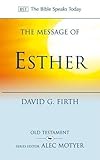This post continues a series looking at various issues raised by the book of Esther. I’d love your feedback in the comments
Because Vashti refused to come when he called, Xerxes (or Ahaseurus) decided to ditch her in favour of a new, more compliant wife. One would think that no preacher would be so crass as to suggest that Xerxes was justified in divorcing his wife for such a minor misdemeanour, although this astonishing quote from Luther (cited by Jobes) suggests otherwise…
The third case for divorce is that in which one of the parties deprives and avoids the other, refusing to fulfil the conjugal duty or to live with the other person… Here it is time for the husband to say “If you will not, another will; the maid will come if the wife will not.” Only first the husband should admonish and warn his wife two or three times, and let the situation be known to others so that her stubbornness becomes a matter of common knowledge and is rebuked before the congregation. If she still refuses, get rid of her; take an Esther and let Vashti go, as King Ahaseurus did.
Much as I think Luther was something of a genius, I think he’s dead wrong here. At the very least, using Ahaseurus and Vashti as an example was a mistake. And his remedy of a series of warnings is hardly a gospel-centred approach to marriage difficulties.
I did a study of the biblical teaching on divorce earlier this year. I don’t have the space or time to summarise all my findings, but the basic takeaway is that Jesus took the marriage covenant very seriously indeed. So in the style of Luther (i.e. bluntly) let me present a brief Q and A on divorce:
Q: My wife refused to come when I called her, can I divorce her?
A: No.
Q: My wife isn’t hot any more. Can I get a divorce and upgrade to a sexier model?
A: No.
Q: My wife is cranky and bad tempered. Can I divorce her?
A: No. Do whatever you can to bring her pleasure.
Q: I am no longer in love with my wife. Can I get a divorce?
A: No. You were never in love with your wife. You were, and still are, in love with yourself.
But why not? Why labour on with a marriage that just “isn’t working”? We need to understand two things. First, marriage is a covenant – that is to say, it’s a promise that we ought to take very seriously. Second, true love presupposes commitment. “I’ll love you and leave you” is an oxymoron. Craig Blomberg sums it up brilliantly in his recent post “marriage is for life”:
It’s time to return to basics. Love is a commitment, not a feeling. Feelings follow from godly actions, not vice-versa. Wedding vows are promises: “till death do us part.” A divorcee by definition is a promise-breaker. Occasionally, it is impossible to keep promises no matter how much one wants to do so, because “it takes two to tango.” I cannot stay married if my spouse refuses to do so. But taking the initiative to divorce, and for no better reason than lack of personal fulfilment, simply cannot by any stretch of the Christian imagination ever be right.
Husbands – make it one of your chief life ambitions to remain faithful to your wife (second only to remaining faithful to the Lord). If things are not going well in your relationship, take responsibility for it and be willing make whatever changes are necessary to for your marriage to thrive.



